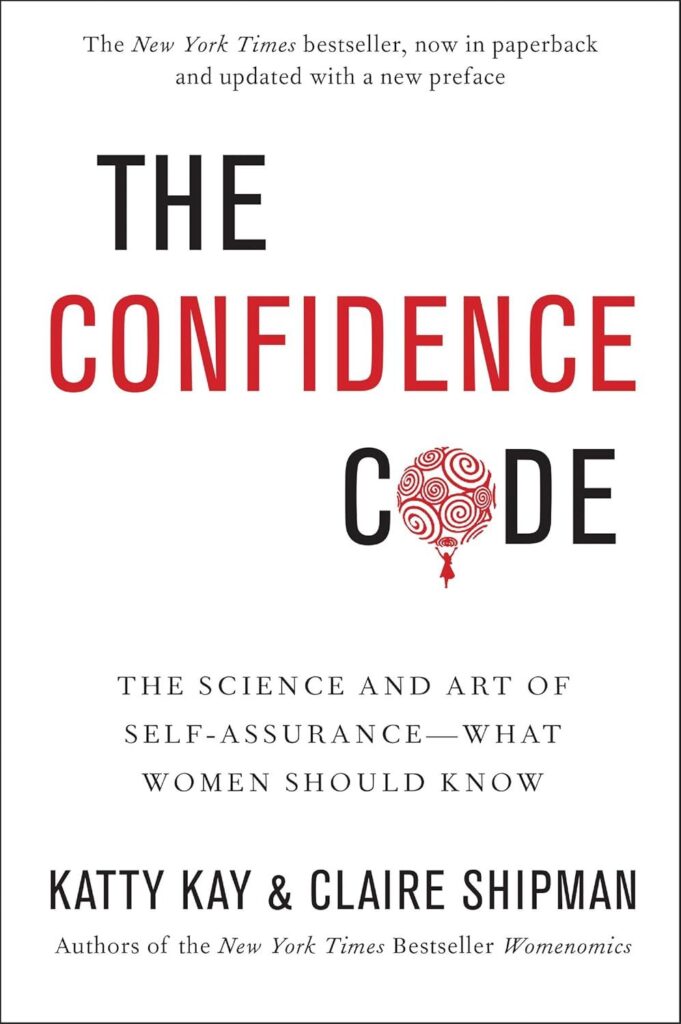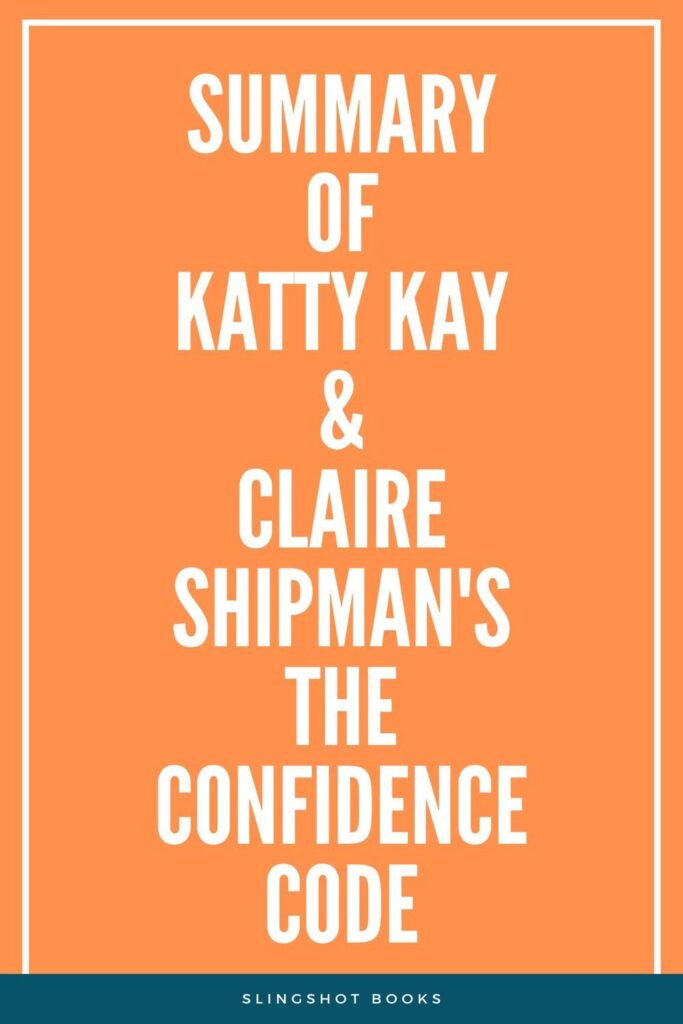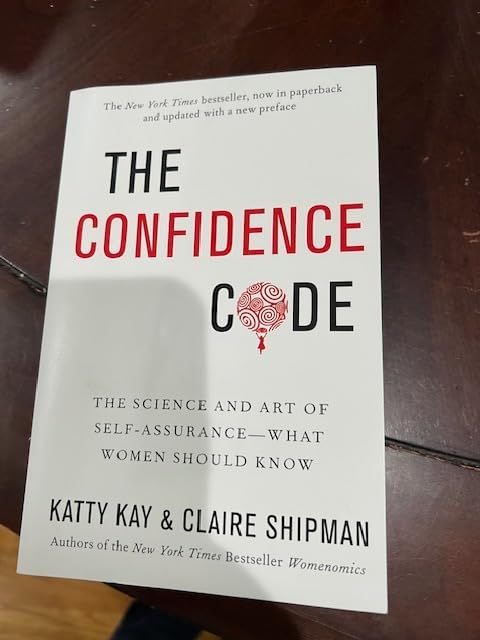Introduction: Why The Confidence Code Matters

If you’ve ever asked yourself why some people step forward with boldness while others hesitate even when equally capable the book The Confidence Code by Katty Kay and Claire Shipman offers an eye-opening answer. The main problem most readers search for is how to build genuine confidence that doesn’t feel fake or forced. This book doesn’t just motivate you with empty words; it shows you the science, psychology, and practical strategies behind developing lasting confidence.
The solution, according to the authors, is not waiting for perfection or comparing yourself endlessly, but learning how to act, fail, and grow with courage. In this article, you’ll find a detailed summary of The Confidence Code, written in a natural, human way that highlights its core lessons and shows you how they can apply directly to your life.
What Is The Confidence Code About?
The Confidence Code by Katty Kay and Claire Shipman is a research-driven yet highly relatable exploration of confidence what it is, where it comes from, and how we can strengthen it. The authors, both respected journalists, noticed that brilliant and talented women often held back, doubting themselves despite their abilities. This observation led them to dig deeper into neuroscience, genetics, psychology, and real-life interviews with successful women across industries.
The result is a book that argues confidence is not some mysterious trait you’re either born with or not. Instead, it is a skill a mindset that can be cultivated.
You may also like: Best Confidence Building Books for Introverts: 8 Unlocking Quiet Strength
The Core Message: Confidence Is Action
One of the most powerful takeaways from The Confidence Code by Katty Kay and Claire Shipman is that confidence doesn’t come from overthinking or over-preparing. It comes from action. When you take a step forward, even if you’re uncertain, you prove to yourself that you can handle challenges. This loop of action → experience → belief builds authentic confidence over time.
The authors emphasize that waiting until you “feel ready” is a trap. Readiness is created through doing, not through thinking.
Science Behind Confidence

The book dives into fascinating research to explain the biological and psychological roots of confidence. For instance:
Genetics and Brain Chemistry: Some people are naturally more predisposed to confidence, but this is only part of the story. The brain is adaptable, and habits of thought can reshape confidence levels.
Neuroscience of Risk-Taking: Confidence grows when you stretch your comfort zone and expose yourself to manageable risks.
The Confidence Gap: Studies show that women often underestimate their abilities compared to men with the same skills. This gap explains why confidence not competence often determines who gets ahead.
By grounding their insights in science, Kay and Shipman make it clear that confidence is not a fluffy concept but a measurable, trainable quality.
The Confidence Code in Real Life
Beyond theories and research, The Confidence Code by Katty Kay and Claire Shipman shines through the powerful stories of women who have lived the struggle of self-doubt and learned how to move past it. The authors didn’t want the book to feel abstract, so they interviewed influential leaders, politicians, athletes, and business executives to uncover how confidence actually works in daily life.
One striking example comes from Christine Lagarde, the former head of the International Monetary Fund. Despite being one of the most powerful women in global finance, she admitted that she often second-guesses herself before speaking or making decisions. What sets her apart is not the absence of fear but her ability to take action anyway. This reinforces the central theme: confidence is not about never doubting it’s about acting in spite of doubt.

Another insight comes from women in highly competitive environments such as Silicon Valley and Washington, D.C. Many described moments when they held back in meetings, worried about saying the “wrong thing,” only to see a male colleague confidently share a similar idea and get credit for it. These stories highlight the real-world cost of hesitation and the need to practice speaking up, even imperfectly.
The book also draws attention to everyday situations that most readers can relate to: hesitating to apply for a job unless they meet 100% of the qualifications, doubting whether they belong in leadership roles, or replaying conversations in their heads wondering if they “sounded smart enough.” By sharing these lived experiences, the authors show that self-doubt is universal even among those at the top of their fields.
What makes these stories so powerful is the relatability. It’s reassuring to realize that even accomplished women like Angela Merkel or top athletes still wrestle with insecurity. Their success didn’t come from eliminating fear it came from training themselves to push forward regardless. This lesson is a call to action for readers: confidence is not waiting for the inner critic to disappear, but choosing to raise your hand, send the application, or voice your opinion despite its presence.
Ultimately, the real-life examples in The Confidence Code drive home a crucial point: confidence is not about perfection or innate talent. It’s built in the messy, imperfect moments of daily life when you step into discomfort, risk failure, and slowly prove to yourself that you are capable.
Key Lessons from The Confidence Code
1. Stop Seeking Perfection
Perfectionism kills confidence. When you wait for everything to be flawless, you miss opportunities. The book suggests embracing mistakes as part of the growth process.
2. Take Action Before You’re Ready
Confidence grows in the doing. Every small risk you take strengthens your belief in your ability to handle bigger challenges.
3. Rethink Failure
Instead of viewing failure as proof of inadequacy, see it as feedback. Each setback teaches you something valuable and builds resilience.
4. Silence the Inner Critic
Self-doubt is normal, but it doesn’t have to control you. The authors encourage readers to challenge negative self-talk and replace it with constructive thoughts.
5. Confidence Is a Choice
Perhaps the most empowering idea in The Confidence Code by Katty Kay and Claire Shipman is that confidence is not fixed. You can choose daily actions that build it, like speaking up in meetings, setting boundaries, or simply saying “yes” to new experiences.
Why This Book Resonates with So Many Readers
What makes The Confidence Code stand out is its mix of science, storytelling, and practical advice. It doesn’t lecture you; it shows you why you doubt yourself and how to break the cycle. The human element stories from women who faced the same struggles makes the book relatable and inspiring.
For anyone searching for a clear path toward self-assurance, this book provides not only the knowledge but also the permission to act imperfectly.
About the Authors

Katty Kay is a British journalist, broadcaster, and longtime anchor for BBC World News America. She is known for her clear, insightful reporting on global events and for her ability to explain complex issues in ways that feel both approachable and relevant. Beyond her journalism, she has become a respected voice on women’s empowerment and leadership.
Claire Shipman is an American journalist and former correspondent for ABC News and CNN. She has covered politics, international affairs, and stories of human resilience, bringing depth and authenticity to her reporting. Shipman’s passion for exploring confidence and leadership especially for women shapes her work as an author and speaker.
Together, Katty Kay and Claire Shipman bring a unique blend of storytelling and research to The Confidence Code. Their backgrounds in journalism allow them to weave science, interviews, and lived experiences into a book that feels both practical and inspiring.
Ready to Unlock Your Confidence?
If The Confidence Code by Katty Kay and Claire Shipman feels like the missing key you’ve been searching for, don’t wait another day to start your journey. This book isn’t just theory it’s a practical guide that shows you how to turn hesitation into action and self-doubt into strength.
Whether you prefer holding a physical copy, reading on your Kindle, or listening on the go, this book gives you the tools to build authentic confidence step by step. Your future self will thank you for choosing courage today.
Why You Can Trust Their Insights
What makes The Confidence Code by Katty Kay and Claire Shipman so trustworthy is the unique combination of their journalistic expertise and their deep research into psychology and neuroscience. Unlike self-help books that rely only on personal opinion, their work is grounded in scientific studies, real-world interviews, and years of observation.
Katty and Claire have spoken with world leaders, top executives, and researchers who understand the mechanics of confidence. This means their advice isn’t just inspirational it’s practical, evidence-based, and proven in both personal and professional settings.
When you read their words, you’re not only getting motivation but also actionable strategies backed by data and lived experiences. That’s what makes their insights stand out and why readers around the world continue to find value in this book.
Final Thoughts: Living the Confidence Code
The beauty of The Confidence Code by Katty Kay and Claire Shipman lies in its simplicity: confidence is built by choosing courage over hesitation, action over analysis, and growth over perfection.
If you’ve been waiting to feel “ready” before going after a goal, the book challenges you to flip the script: act first, and let confidence catch up.
Ultimately, this summary is not just about understanding the book it’s about applying its lessons. The next time you hesitate, remember: confidence is not the absence of doubt, but the willingness to step forward anyway.
Frequently Asked Questions about The Confidence Code
1. Is The Confidence Code only for women?
No. While the book focuses heavily on the challenges women face with confidence, the lessons apply to anyone who struggles with self-doubt. Both men and women can use its insights to build courage and take action.
2. What is the main message of The Confidence Code by Katty Kay and Claire Shipman?
The central idea is that confidence is not something you’re born with it’s a skill you can build. The key is to stop overthinking and start acting, even if you feel uncertain.
3. How can I apply the Confidence Code in daily life?
You can start small: speak up in a meeting, take a new opportunity, or accept that mistakes are part of growth. Confidence grows each time you take action despite fear.
4. Is the book more science-based or motivational?
It’s a blend of both. The authors use neuroscience and psychology research, but they also include real-life stories and practical advice, making it both inspiring and grounded in evidence.
5. Do I need to read the entire book to benefit?
Not necessarily. Even reading key chapters can give you tools to rethink failure, silence your inner critic, and build authentic confidence. But reading the full book gives you the complete picture.
